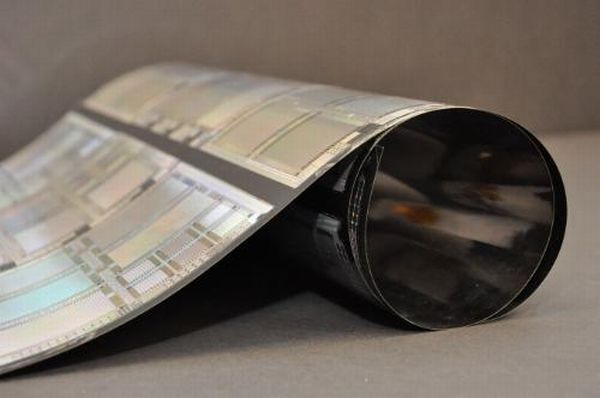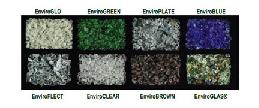
Powerfilm Inc. the Ames, Iowa based manufacturer of flexible solar film has applied its roll-to-roll proprietary manufacturing technology to produce a flexible display. This includes a full array of interconnected backplane transistors with built in drivers for the front plane that can turn individual pixels on and off for a full function display.
Powerfilm has already created a niche for itself in the manufacture of flexible solar film that is being applied in Building Integrated Photovoltaics (BIPV) to harvest solar power from the vertical faces of buildings or windows. Flexible solar film has also been applied innovatively to the roofs of bus shelters and to the canopy of golf carts.
The development of this flexible display is important for a number of reasons. Roll-to-roll manufacturing is akin to newspaper printing and can produce long continuous strips. Powerfilm was making 13 inch wide and up to 2400 feet long strips, now they are upgrading it to 1 meter width. The interconnection between the transistors is made fully automatic on the machine, eliminating the cost and quality issues with manual interconnection. The substrate is made of polyimide and can be encapsulated in a variety of materials depending on the end application and environmental conditions.
The flexible film can be provided with backing of fabric or fiberglass or other materials to enable easy installation. All these benefits are already being realized by Powerfilm in its solar film applications. An added advantage with this display is that it would be self-powering, Powerfilm can build in solar charging into this film. It is this feature that has led to this development being funded $5.5 million, by the Army Research Labs who are looking forward to apply this technology for battlefield electronic devices, which today needs heavy and expensive batteries.
Powerfilm licensed a key technology for self aligning imprint lithography from HP for the development of this backplane, which took some 5 years of research and development. Besides the military application cited above, flexible displays would find acceptance in large outdoor advertising displays, for e-book readers and other applications, where the lower cost and the self-power feature would be advantageous.
Via: PowerFilm




